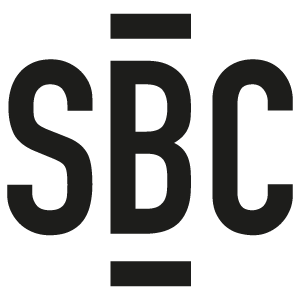In the B2C space, using social good in marketing is common practice.
The same can’t necessarily be said for B2B marketing. Tapping into the emotive power of important issues has been mainstream for as long as there’s been marketing (though perhaps has seen an increase in the social media age).
And as younger generations increasingly bring their desire for stakeholder capitalism to both their employment and their spending, this trend is only likely to grow.
But is it a trend B2B brands can tap into?
We think so, but it can be a bit tricky to get right.
Many of the tools that the B2C crowd have – heart-string-tugging adverts, partnering with charities, making donations for each purchase etc. – aren’t always available to B2B marketing professionals, for three key reasons:
1. B2B marketing is less emotion-driven
An individual in B2B might be swayed by emotion (they’re human, after all) but presenting the idea internally will require a solid business case to influence their decision – with their reputation (and potentially promotion) on the line.
2. B2B marketing has more stakeholders
More people in the buying decision means a greater diversity of opinion. That means any issue – no matter how seemingly uncontroversial – might find a greater spread of opinions.
3. B2B buyers are (usually) using someone else’s money
While consumers might be happy to pay a premium or add a donation to a purchase, most B2B buyers are using someone else’s budget and are duty bound to justify additional costs.
But, all that said, there is one powerful way that B2B businesses can embrace social good in their business and their marketing, helping to do a lot of good along the way.

The rise of social-good learning content
B2B brands need to go a step further than simply talking about wider issues. It’s not just about tapping into emotions – it’s about offering solutions.
This is where social-good learning content comes in – a valuable (yet often overlooked) tool in the B2B marketing arsenal.
By offering value-driven learning content – articles, eBooks, videos, webinars, interactive quizzes or even a full content curriculum – you help guide your customers and prospects on what they can do in their day-to-day role to address social challenges.
By offering informative and engaging social-good learning content, you’re not only addressing the social issue, but you’re offering customers real value, building your brand reputation and presenting yourself as a knowledgeable partner.
Why social-good learning content works for B2B marketers
1. It can help like-minded customers find you
People within your customer base are likely to be looking for this kind of information. If you’re the one to offer it, that gives them an avenue to find you.
Done right, it’s also very sharable. As people in your customer base are likely to know others in similar positions within their industry, it’s likely to get shared with relevant people too – and the social proof of having someone share your content can be a powerful thing.
2. It can be gated (if you want)
If your training content is valuable enough, you’re able to make it gated to capture email addresses for prospective customers if that’s your preferred way of working.
Even if you don’t gate all of the content, prospects may be happy to offer an email address in exchange for the most valuable parts of it – such as data insights, follow-up content or even a consultation with one of your experts.
3. It can increase your brand recall
Educational content can help to build your brand reputation and make you more memorable. In behavioural science we call this the messenger effect – the person delivering the message can be as important as the message itself.
That means when you do send a follow-up suggestion that they consider your product or service, they know the suggestion carries weight.
4. It can trigger reciprocity
Reciprocity – the feeling of indebtedness we feel when someone does something for us – is a powerful human motivator.
If a prospect feels they’ve learnt something valuable from you – potentially even for free – they might look more kindly on offers for product demos.
5. It can help you highlight features
The very best social-good learning content isn’t just an issue you’re talking about, it’s an issue your products and services are doing something about.
That means there are likely to be features within your offering that help with the fundamental social good you’re highlighting – and which your competitors don’t necessarily have.
4 things to remember when deciding on your social-good learning content

1. Is it relevant to your products or services?
It’s possible for your organisation to support any issue you choose, but if you’re planning to offer learning content around it, it needs to be a topic that you’re qualified to talk about.
It’s not enough for you to be interested in it, it needs to be an integral part of what you do. Otherwise, why should the audience come to you rather than a non-profit in the same space?

2. Is it something you’re taking long-term action on?
If you’re going out on a limb to tell others what they should be doing, you’d better be practicing what you preach otherwise you risk being accused of hypocrisy – and perhaps rightly so.
After all, building this content isn’t about just jumping on trends, it’s about building your reputation by sharing your knowledge and commitment around something that truly matters to your brand.

3. Does it resonate with your audience?
Your issue should be of direct relevance and value to the day-to-day role of your audience.
Without this aspect, as much as they might support you, they aren’t going to give up their workday to complete training around it.

4. Does it offer practical value?
The knowledge you share needs to come with actionable insights that are within the control of your audience to implement.
After all, if the only action your audience can take is to go and tell another department that, according to some online training, they’re doing their job wrong… well that’s not going to make anyone popular or achieve much.
Examples of relevant social-good learning content
The exact topics covered by social-good learning content can be as varied as the B2B brands engaging with them, but potential examples would be things like:
- A web design agency – offering accessibility training
- A hosting service – offering green-coding advice
- A recruitment agency – offering insights to increase female representation within STEM careers
- Vehicle leasing company – offering road-safety-training tips
- A SaaS accountancy provider – offering insights on payroll giving
As long as the topic matches with those four rules above, there’s no real limit on what you can cover.
Social-good learning content is powerful – but it’s not about you
Offering customers and prospects social-good learning content can be a powerful tool for B2B marketers. But it has to be about more than just jumping on the bandwagon.
If your first reaction to an important social issue is “how can we make this about us and monetise it?” then it’s likely to backfire – and deservedly so.
But if you have genuine knowledge, insights and experience into an issue, and are actively trying to engage with a wider audience to help address it, then you can not only impact how your industry works, but also demonstrate your credibility as experts.





